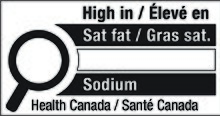

| Food and Drugs Act | |
|---|---|
 | |
| Parliament of Canada | |
| |
| Citation | R.S.C. 1985, c. F-27 |
| Amended by | |
| Budget Implementation Act, 2023 | |
| Status: Amended | |
The Food and Drugs Act (French: Loi sur les aliments et drogues) is an act of the Parliament of Canada regarding the production, import, export, transport across provinces and sale of food, drugs, contraceptive devices and cosmetics (including personal cleaning products such as soap and toothpaste). It was first passed in 1920 and most recently revised in 1985. It attempts to ensure that these products are safe, that their ingredients are disclosed and that drugs are effective and are not sold as food or cosmetics. It also states that cures for disease listed in Schedule A[1] (including cancer, obesity, anxiety, asthma, depression, appendicitis, and sexually transmitted diseases), cannot be advertised to the general public.[citation needed]
After the launch of the Federal Department of Health in 1919, the Food and Drugs Act was presented in late 1920. Rules and regulations developed under the Act established the requirements for licensing and creating drugs in Canada. The law granted the Minister of Health the right to cancel or suspend licenses of companies failing to comply with the requirements.[2]
The Food and Drugs Act was not significantly modified until 1947 when the foundations were laid for the current market today. In 1951, drug manufacturers were required to submit a file for each new drug prior to marketing their product. However, during the early 1960s, the drug thalidomide, which had been approved to enter the market, resulted in the deaths of thousands of infants and severe birth defects in others when the drug was taken by women in early stages of pregnancy.
As a result of the problems caused by the drug thalidomide, the Act was revisited and strengthened by Health Canada. The revised version placed new requirements on manufacturers to provide evidence for efficacy in seeking a Notice of Compliance, which must be obtained before any drug could be sold. The manufacturer must meet all the requirements before making any drug available to the public, but once the drug passes with no adverse reactions and without any changes needed to the drug's formula, it may never be subjected to review by Health Canada again.[citation needed] Some health advocates[who?] want post-approval surveillance to watch for unexpected problems.
Part I provides general interpretations of the terms, and provides details of each of the topics discussed on what the Act entails:
Part II of the Act focuses the administration and the Enforcement that allows the government to intervene with the manufacturer. It entails:
Parts III (enacted in 1961) and IV (enacted in 1969) provided for implementation of controls required by the Convention on Psychotropic Substances. Part III dealt with "controlled" drugs such as amphetamine, methaqualone, and phenmetrazine, which have legitimate medical uses. Part IV focused on Schedule H "restricted drugs", those whose only legitimate use is for scientific research, such as the hallucinogens LSD, DMT, and MDMA. These parts established eight classes of regulated substances, ranging from Schedules A to H.
The 1996 Controlled Drugs and Substances Act repealed Parts III and IV.
In April 2008, an amendment to the Food and Drugs Act, Canadian Bill C-51 was tabled in the House of Commons. The purpose of this bill was to modernize the regulatory system for foods and therapeutic products, to strengthen the oversight of the benefits and risks of therapeutic products throughout their life cycle, to support effective compliance and enforcement actions and to enable a greater transparency and openness of the regulatory system.[3] Some of the proposed amendments are as follows:
The bill has been subject to criticism due to a perception that the bill would illegalize all food and Natural Health Products by categorizing them as drug products.[4] Natural health products in Canada have been regulated as a subset of drugs since the Natural Health Products Regulations were put into place on January 1, 2004. Health Canada has stated "The Natural Health Product Regulations, introduced in 2004, will continue to operate the same way under Bill C-51. Canadians will continue to have access to natural health products that are safe, effective and of high quality.[5]
In spite of this claim, The Natural Health Industry remained skeptical. A watchdog group was employed to investigate the concerns and a number of hidden camera videos surfaced that further aggravated the NHP industry concerns.[6]

Frequent consumption of foods rich in sodium, sugars, or saturated fats is associated with elevated health risks, including but not limited to:
To address this concern, a front-of-package nutrition symbol has been introduced. This symbol serves the dual purpose of aiding consumers in making informed choices while grocery shopping and assisting health professionals in educating the public about the nutritional content of foods high in sodium, sugars, and saturated fat.
The front-of-package nutrition symbol is mandatory for prepackaged foods that meet or exceed specified levels for sodium, sugars, or saturated fat. However, certain foods are exempt from displaying this symbol, including:
The front-of-package nutrition symbol is depicted in black and white and features a magnifying glass, emphasizing whether the food product is high in sodium, sugars, saturated fat, or a combination of these components.
The selection of the front-of-package nutrition symbol was informed by feedback from Canadian residents and consumer research, ensuring its relevance and comprehensibility.
For uniformity and ease of identification, the nutrition symbol must adhere to specific requirements concerning size, location, and language: